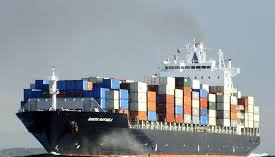Acquisition of ships is
fundamental to the shipping business. Notwithstanding the mode of acquisition,
i.e. whether by an outright purchase, construction of a new ship or otherwise,
ship financing continues to be an integral part of ship acquisition. Financing
ship acquisitions can be effected through the provision of debt or equity.
The most common means is
to obtain a loan for part or all of the purchase price otherwise known as debt
financing. However, due to the nature of the marine business, many financing
institutions are reluctant to finance the acquisition of ships without adequate
security or a good credit rating with such financial institution.
With the advent of “lease
structured financing” debt and equity, as the most common ways of financing
ship acquisitions appear to have found a competitor. Lease structured financing
is a popular and well-tested concept among airlines and other aircraft
operators.
Ship Lease Operation
The lease is perhaps best
described in general terms as a conveyancing method where the possession of
property passes but ownership or title in the asset does not pass to the
purchaser. A somewhat more precise legal definition of a lease is that it is a
contract through which the owner of property (the lessor) conveys to another
person (the lessee), in consideration of payment as agreed, the right to
possession and use of the property for an agreed period.
There are basically two
types of lease:
1.
Operating Lease; and
2.
Finance Lease
Operating Lease
Operating lease is a lease
in the real sense. Outside of shipping it is widely used for rental (or hiring)
of equipment and durable consumer items. The risk usually remains with the
lessor who maintains the asset and the lessee normally has the discretion to
terminate the lease, at the end of which the property reverts back to the
lessor. However, if so provided in the contract, either party may have the
right to cancel the lease. A typical example of the operating lease is the leasing
of containers in the shipping industry, where container lines lease containers
from container leasing companies.
As far as ships are
concerned, where an operating lease is in place, it is usually in the form of a
short or mid-term bareboat charter after which the lessee will return the ship
to the lessor. The lessor assumes such risks as the technological obsolescence
of the ship and the re-employment of the ship after the lease period. During
the charter period, the lessee acts as if he owns the ship and the lease
payments do not involve an amortization of the leased property; nor is there an
option to purchase in favour of the lessee. Recently, there has been an
increase in the use of short-term bareboat charters with an increasing number
of financial institutions willing to provide ships for this market. Although it
is not a financing vehicle in strict terms, it is referred to as an alternative
source of finance.
It is notable that there
is another quasi-operating lease where the lessor may provide the manpower and
services required to operate the equipment. In aviation this is referred to as
“wet lease” while in shipping it is referred to as time charter. Time
chartering is not pure equipment leasing because the provider of the ship, i.e.
the owner, provides the crew and is responsible for the navigational
operation of the ship. The charterer is thus not in full possession of the
ship. However, it is also an important and convenient way for a shipowner to
expand his fleet in peak trading conditions because he can completely control
the commercial operation of the ship. In this sense, time charter is very much
akin to an operating lease.
It is pertinent to note
that in recent times time-charter periods especially for big container ships
have increased. This, together with the shortening of bareboat charter period,
denotes that operating leases are playing an increasingly important role in the
supply of tonnage for shipping companies.
Finance Lease
Finance lease transfers
all the risks and rewards incident to ownership of an asset. This type of lease
is typically used for long –term finance of ships and covers a substantial part
of the ship’s economic life. The ship is usually fully amortized (including the
lessor’s returns on his investment). The lessor, whose main role is as
financier gets most of his pay-out in respect of the ship because the total of
the hire amount and payments are calculated to cover the cost or purchase price
of the ship, the additional expenses which the lessor might incur as well as
part of the lessor’s profit. The lessor also has little involvement with the
asset beyond owning it, and all operating responsibilities including
procurement of insurance fall on the lessee who, in the event of early
termination, must fully compensate the lessor (usually the lessee anticipates a
substantial down payment. This binds the lessor to the sale. If the lessee
defaults, he loses his down payment as well).
Although the finance lease
generally appears on the lessee’s balance sheet, its main attraction to
shipping companies is that it brings tax benefit by depreciating the ship’s
value against profits and by assisting companies with high profits but no
suitable investment of their own to obtain tax relief by purchasing a ship.
Under a finance lease scenario, the ship, built to the lessee’s specification
(if a newbuilding), or chosen by the lessee (if it is a second hand), is
purchased by the company providing the finance (the lessor) and leased under a
long-term agreement (usually a bareboat charter) to the shipping company
(lessee) which may purchase the property at a nominal price after the primary
leasing period.
The advantages of ship
leasing, as argued by practitioners, are similar to those claimed by the
classical economists. These advantages are focused on the two major categories,
tax benefit and financial position improvement.
Tax Benefit
The tax advantage argument
is perhaps the strongest justification for using lease as a financing vehicle
in shipping. Experts have pointed out that the tax benefits accruing out of
leasing are of predominant interest. With leasing, the most significant tax
benefit is the deferral of tax liability on capital allowance. The rate of hire
will reflect the immediate use of the tax allowance by the lessor. Capital allowances
can be used as set offs against taxable profits. The lessee would favour
leasing as a financing vehicle in shipping because the lessee is usually keen
on ‘disguising’ a finance lease in the form of an operating lease to derive the
off-balance sheet benefit.
Financial Position
Improvement
The scarcity of financing
from financial institutions or other financing options for shipping lines has
created a space which is now filled by leasing companies which have easier
access to capital funds. In such cases, it is of great value for the carriers
to have access to diverse sources of capital that will assist them with their
fleet expansion and renewal plans by acquiring larger, modern and
fuel-efficient vessels and achieving the necessary economies of scale to remain
competitive. In a cyclical and very capital intensive industry, such as
shipping, the lease can preserve the lessee’s working capital and its financial
position through long-term repayment structure (often longer than the one
offered from banks) and effective cash management through matching the rental
profiles with income streams (cashflow). Moreover, the lease structure permits
the lessor to lock in carriers to long-term charter arrangements and fixed
rates that are oblivious to the volatility of the spot charter market and thus
achieve a secure revenue base and higher financial leverage than other
investors in the ship financing market.
Furthermore, in comparison
with the traditional debt financing from financial institutions, lease
financing differs in the sense that the lessor retains legal title/ownership of
the ship during the lease period which provides the lessor with a built-in
security that offsets the absence of a loan agreement and ship mortgage in the
lease financing ‘equation’. Despite being the owner, the lessor does not have
possession of the ship since such right is retained by the lessee.
Conclusion
Despite the current
downturn in the shipping market, there are good grounds to believe that there
is still overflow of available finance in the market. In the last few years,
there has been significant growth and expansion in the leasing business.
Similarly, there has been an upsurge inleasing transactions, particularly
amongst the Chinese commercial banks, the subsidiary leasing companies of
banks, hedge funds and financial institutions fueling this growth and becoming
major capital providers to the shipping industry with an intention to further
expand and diversify their portfolio of ships and establish their presence in
Europe, America and Africa.
It can be argued that the
lease structure highlights the polarisation of the shipping business. As a
result, the pure asset players, such as the lessors have strengthened their
financial position while the carriers have become weaker. This has changed the
traditional notion of the ‘shipowner’ as we know it, in the sense that the
leasing companies are now the large shipowners.
Being a sophisticated
structure, whether or not the purchaser will qualify for a the ship lease will
depend on the parties’ intentions, credit ratings, operational decisions and
market status. Despite its restrictions, the prospects of the finance lease
seems promising given the increasingly popular trend of outsourcing the asset
management services of shipping companies. As a relatively new alternative in
the international financial arena, ship lease is still developing and
undergoing tests.
Damilola Osinuga is an
Associate in the Shipping and Oil Services practice group of Bloomfield Law
Practice, Nigeria
Ed’s Note – This article
was originally posted here.







